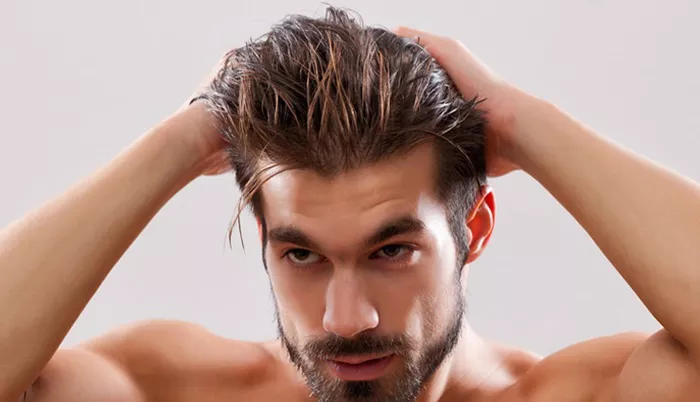Healthy hair is a sign of overall well-being and proper care. As a hairstylist, I often hear clients ask, “How do I know if my hair is healthy?” The answer lies in understanding how healthy hair should look, feel, and behave. This article will break down the key characteristics of healthy hair, explain common signs of damage, and provide tips to maintain or restore your hair’s vitality. Let’s dive in.
The Texture of Healthy Hair: Smoothness and Softness
Healthy hair feels smooth to the touch. When you run your fingers through it, there should be no snags, roughness, or frizz. This smoothness comes from the hair cuticle—the outermost layer of the hair shaft. In healthy hair, the cuticle lies flat, like shingles on a roof, creating a sleek surface that reflects light.
Softness: Healthy hair is soft but not overly silky or slippery. It should feel gentle against your skin, almost like touching a fine fabric. If your hair feels straw-like or brittle, it may lack moisture.
No Tangles: While all hair types can tangle, healthy hair is easier to detangle. If your hair knots excessively, it might be porous or damaged.
Pro Tip: To test smoothness, slide your fingers down a strand. If it feels bumpy or uneven, the cuticle may be damaged.
Moisture and Hydration Balance
Moisture is essential for healthy hair. Your hair needs water and natural oils to stay supple, but balance is key.
Signs of Well-Moisturized Hair
- Flexible Strands: Healthy hair bends easily without breaking. Try twisting a strand—if it springs back, it’s hydrated.
- Subtle Shine: It reflects light naturally (not greasy). Dull hair often lacks moisture.
- No Static: Static occurs when hair is too dry.
Too Dry vs. Too Oily
- Dry Hair: Feels rough, looks dull, and may snap when stretched.
- Oily Hair: Feels greasy, limp, or heavy due to excess sebum.
Fix It: Use a sulfate-free shampoo and lightweight conditioner. For dryness, try weekly deep conditioning.
Strength and Elasticity
Healthy hair is strong yet flexible. Elasticity—the ability to stretch and return to its original shape—is a critical indicator of health.
Testing Elasticity
Pluck a strand (from a brush, not your scalp!).
Gently stretch it:
-
- Healthy Hair: Stretches 20–30% of its length and bounces back.
- Weak Hair: Breaks immediately or doesn’t rebound.
Causes of Poor Elasticity: Over-processing (bleach, perms), heat damage, or protein deficiency.
Protein vs. Moisture Balance
- Protein: Strengthens hair. Signs of deficiency: limp, gummy strands.
- Moisture: Adds flexibility. Signs of deficiency: brittleness.
Use protein treatments monthly and condition regularly.
Scalp Health: The Root of It All
Your scalp’s condition directly affects your hair. A healthy scalp:
- Feels comfortable (no itching or pain).
- Has no flakes (dandruff signals imbalance).
- Shows minimal redness or irritation.
Check Your Scalp: Part your hair and look for clear, slightly oily skin. Tiny hair follicles should be visible, with no buildup.
Common Issues:
- Dry Scalp: Flakes, tightness.
- Oily Scalp: Greasy residue, odor.
- Inflammation: Redness, bumps.
Solution: Use a gentle exfoliating scalp scrub monthly and avoid heavy styling products.
Common Signs of Unhealthy Hair
Recognizing damage early helps prevent further harm. Watch for:
Split Ends
The ends fray or split into multiple strands. This indicates weakened cuticles.
Excessive Shedding
Losing 50–100 hairs daily is normal. More than that? Stress, diet, or health issues may be culprits.
Breakage
Hair snaps during brushing or styling. Focus on strengthening treatments.
Rough Texture
Feels like straw? Cuticles are likely raised or eroded.
Lack of Shine
Dullness often stems from moisture loss or product buildup.
Tips for Maintaining Healthy Hair
Wash Gently
- Use lukewarm water (hot water strips oils).
- Massage shampoo into the scalp, not ends.
Condition Correctly
- Apply conditioner mid-length to ends. Rinse thoroughly.
Limit Heat Styling
- Always use a heat protectant. Opt for air-drying when possible.
Eat a Hair-Friendly Diet
- Protein (eggs, fish), biotin (nuts), and omega-3s (avocado) support growth.
Trim Regularly
- Every 8–12 weeks to prevent split ends.
Protect from Environment
- Wear hats in the sun. Rinse after swimming (chlorine dries hair).
Choose the Right Products
- Avoid sulfates and alcohols for dry hair. Use leave-in conditioners for curls.
Conclusion
Healthy hair feels smooth, soft, and strong. It has a natural shine, stretches without breaking, and grows from a calm, clean scalp. By understanding these traits, you can identify issues early and adjust your care routine. Remember, consistency is key—nourish your hair inside and out, and don’t skip trims. With patience and the right habits, you’ll achieve hair that not only looks beautiful but feels truly healthy.
Related topics:
The Power of Rosemary Oil for Healthy Hair
7 Vitamins that You Should Take for Healthy Hair
5 Natural DIY Hair Masks for Strong, Healthy Hair


